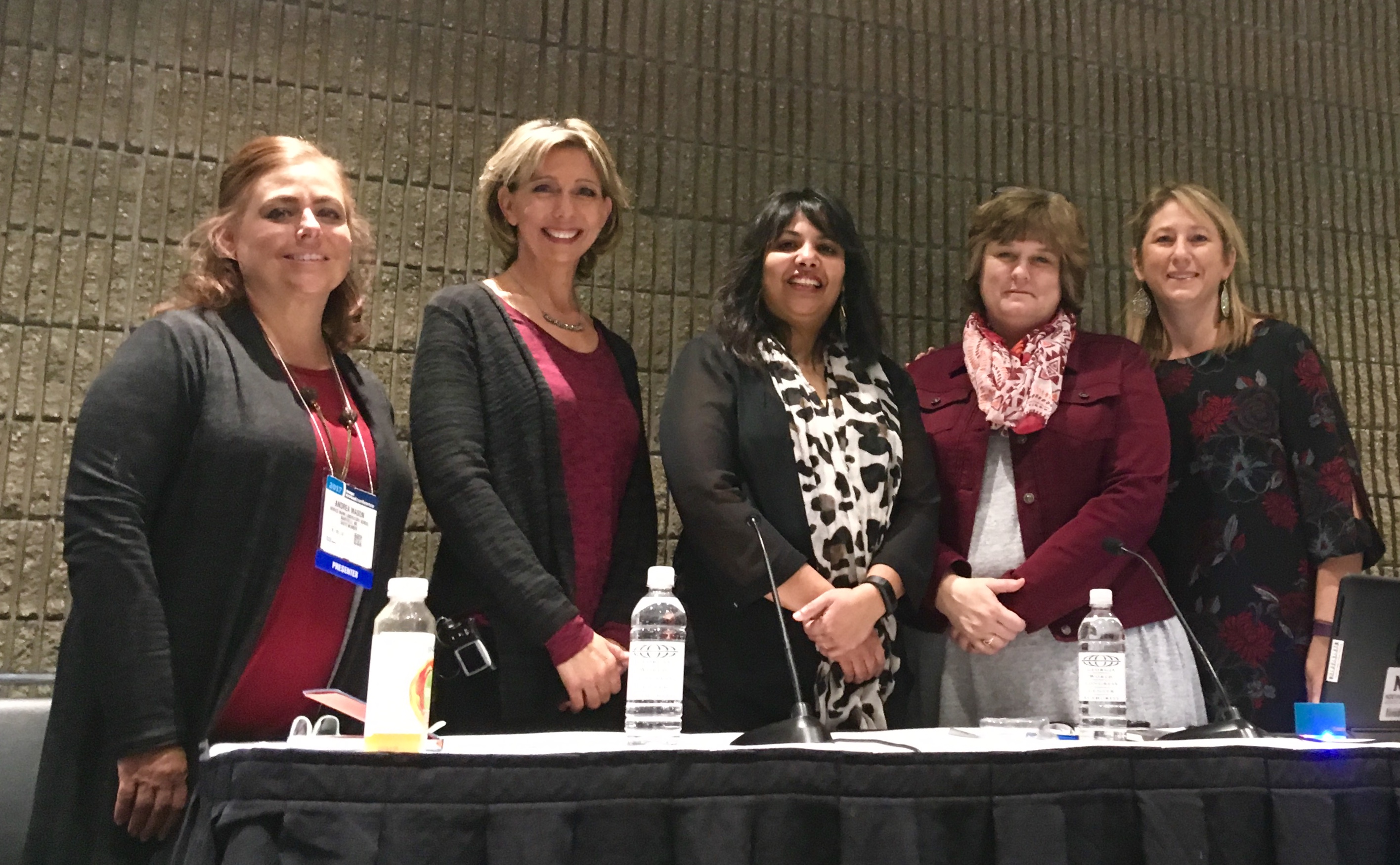Five women from Nodaway County presented their diabetes research at the 2017 National Association for the Education of Young Children (NAEYC) annual conference held in November in Atlanta, GA.
The road to this accomplishment began with SSM Health St. Francis Hospital Diabetes Educator Debra Hull speaking to classes at Northwest Missouri State University, including classes for early childhood educators.

Andrea Mason, Debra Hull, Pradnya Patet, Laura King and Meghan Sheil were photographed at their presentation at the 2017 NAEYC annual conference in Atlanta, GA.
“I want to give St. Francis credit for allowing the time and resources for getting the word out about diabetes,” Hull said.
During these Northwest presentations, Hull met Dr. Pradnya Patet, Northwest associate professor. Patet, impressed with Hull, suggested that the duo write a book for young children about diabetes.
The resulting book, “Stop! Stop! No Sugar on Top!” by Hull and Patet, tells the story of Type 2 diabetes prevention as retold by two body cells, with illustrations, in a fun, easy-to-understand format for young children. The book is available at the Nodaway News Leader for $7.
With the success of the book, Patet wanted to expand by doing research on whether children could understand the complex topic of insulin resistance. Joining the 10-month research project was third and fourth grade Horace Mann teacher Andrea Mason, HM first grade teacher Laura King and Leet Center preschool teacher Meghan Sheil.
“We had beautiful results, showing kids understand more than we realize,” Hull said.
The teachers ran with the topic and turned it into fun projects throughout the research period. The three are continuing with more projects for their students.
“The impact the teachers have on bringing that topic into the classroom, it’s changed lives with a repeated message that is important,” Hull said. “They reported that they saw the message come out with the kids at play and the foods they bring for snack.”
As an example, Hull said, “One child playing with dolls had one doll say to the other, ‘you better be careful what you eat or your pancreas won’t be very happy.’”
The group found in their research that the children have a basic understanding of what healthy eating looks like.
“There’s a lot of preaching and info out there,” Hull said. “The biggest impact on the kids was through the book they understood the why of making healthy eating choices.
“By addressing it during foundational layers of development, it empowers our children to start on the right track. If we wait until there are health problems, it’s harder to make changes.
“One of the outcomes that excites me the most was seeing that when we give the kids deeper understanding, it allows them to have the ability to better gauge balanced, healthy eating. They didn’t criminalize one type of food. I repeatedly heard ‘it’s ok to have a sweet treat in a small amount or once in awhile.’”
The research has not been published yet. Patet wrote the proposal to take the research to the NAEYC conference, the largest early childhood education conference in the world. Attendees at the conference were mostly teachers, administrators and dietitians. Response from attendees of the three-hour presentation has been positive.
Projected figures indicate that 50 percent of Americans will develop Type 2 diabetes, Hull explained.
Going forward, Hull stated, “How do we help impact more young lives in a positive way after we learned what we did through the research?”




Facebook Comments